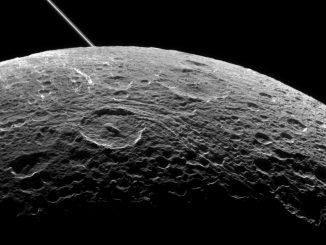
NASA’s New Horizons spacecraft fine-tuned its path toward Pluto on Tuesday, firing its rocket thrusters for 93 seconds to aim for a fleeting flyby of the distant dwarf planet 14 July.
The trajectory correction manoeuvre was successful, slowing the speed of New Horizons by 1.14 metres per second, or 2.5 mph. It marked the first manoeuvre made by New Horizons since it started the final approach to Pluto in January.
The thruster burn was “barely a tap on the brakes for a probe moving about 14.5 kilometres per second (32,435 mph),” officials wrote in a statement released by the Johns Hopkins University Applied Physics Laboratory, which manages the New Horizons mission for NASA.
The probe’s closest approach to Pluto moved back 14 minutes and 30 seconds after the manoeuvre, which also adjusted the spacecraft’s aim point by more than 2,000 miles to hit its narrow target to get the best science data during the one-shot encounter.
“The shift was based on the latest orbit predictions of Pluto and its largest moon Charon, estimated from various sources, including optical navigation images of the Pluto system taken by New Horizons in January and February,” the statement said.
The 93-second burn began at 0915 GMT, but it took several hours for the news to reach ground controllers due to New Horizons’ distance from Earth.
The New Horions spacecraft – about the size and shape of a grand piano – is traveling 3 billion miles from Earth. It is now 93 million miles from Pluto, the same distance between the Earth and the sun.
Alan Stern, the mission’s chief scientist based at the Southwest Research Institute, said there are four more opportunities to adjust the spacecraft’s trajectory before the 14 July flyby.
“We may well cancel some (of the maneuvers),” Stern wrote in an email to AN’s sister website Spaceflight Now.
New Horizons will continue collecting imagery of Pluto over the next few months to gauge its course on approach. Navigators on Earth will determine if more manoeuvres are needed.
The spacecraft’s telescopic camera should take images of Pluto in May that are sharper than the best views captured by the Hubble Space Telescope.
The closest New Horizons will come to Pluto is at a range of about 10,000 kilometres (6,200 miles).
Follow Stephen Clark on Twitter: @StephenClark1.



